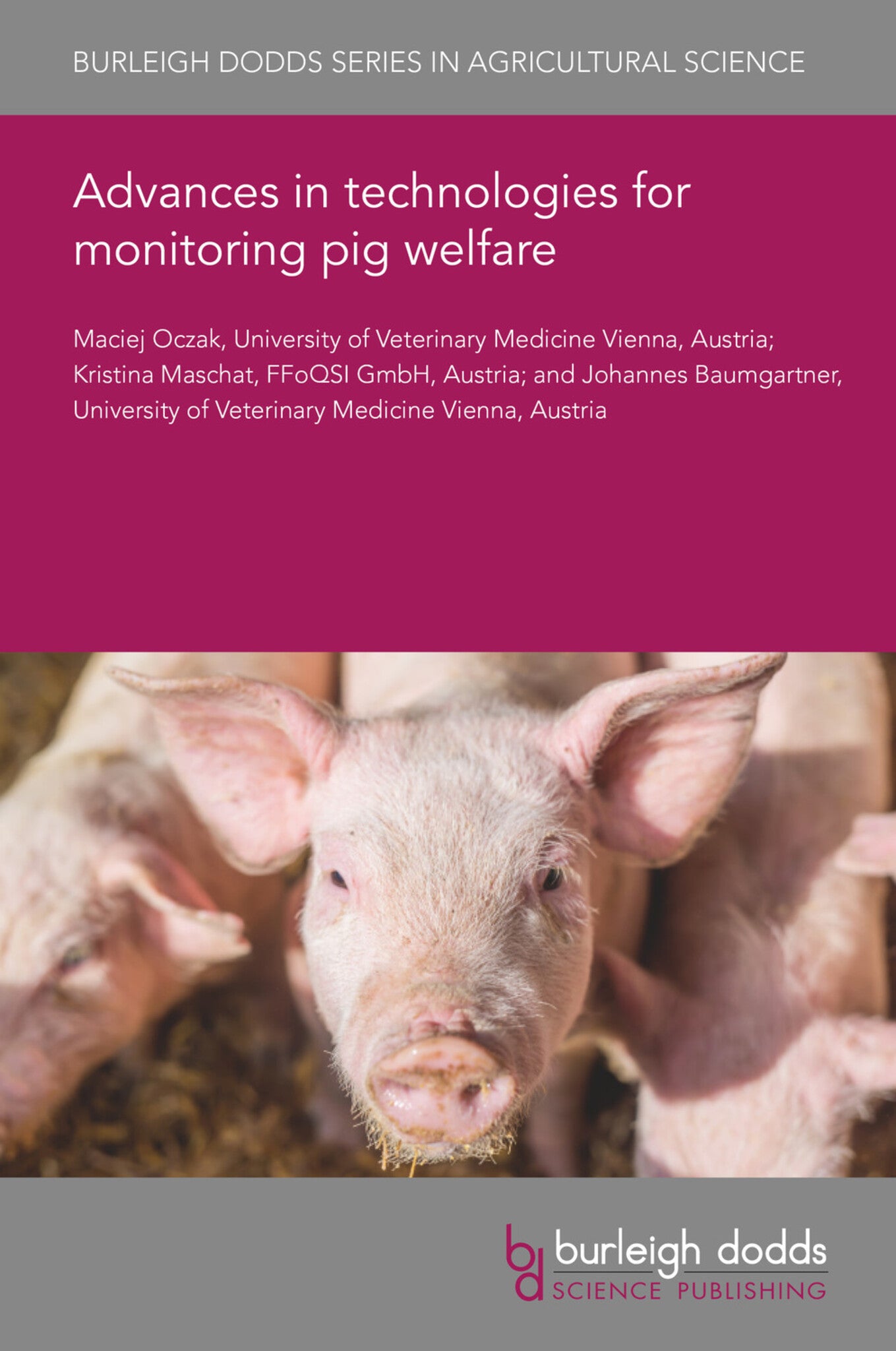We're sorry. An error has occurred
Please cancel or retry.
Advances in technologies for monitoring pig welfare
Regular price
£25.00
Sale price
£25.00
Regular price
£0.00
Unit price
/
per
Sale
Sold out
Re-stocking soon
The pig sector undergoes a major transformation characterized by intensification, geographic concentration, vertical integration and increasing scales of production. This creates new challenges for...
Read More

Some error occured while loading the Quick View. Please close the Quick View and try reloading the page.
Couldn't load pickup availability
- Format:
-
02 February 2021

The pig sector undergoes a major transformation characterized by intensification, geographic concentration, vertical integration and increasing scales of production. This creates new challenges for animal welfare. Sensor technology offers multiple advantages for monitoring key indicators of welfare in pigs that can help addressing these new challenges in the pig sector. Technology allows continuous and objective monitoring on individual and group level, on multiple farms and also in various environments. Real-time implementation of sensor based monitoring systems makes it possible to detect a problem and to take immediate action to improve the life of the animal under consideration. This chapter reviews recent advances in technologies for monitoring key indicators of pig welfare by considering good feeding, good housing, good health and appropriate behaviour. It presents how accelerometer based nest-building detection system can contribute to improvement of pig welfare and major future trends in development of monitoring technology.

Price: £25.00
Publisher: Burleigh Dodds Science Publishing
Imprint: Burleigh Dodds Science Publishing
Series: Burleigh Dodds Series in Agricultural Science
Publication Date:
02 February 2021
ISBN: 9781801460361
Format: eBook
BISACs:
TECHNOLOGY & ENGINEERING / Agriculture / Animal Husbandry, Animal husbandry, TECHNOLOGY & ENGINEERING / Agriculture / Sustainable Agriculture, Sustainable agriculture

1 Introduction 2 Good feeding 3 Good housing 4 Good health 5 Appropriate behaviour 6 Legal and ethical considerations 7 Sensor data management and modelling 8 Case study 9 Conclusion 10 Future trends in research 11 Where to look for further information 12 References



